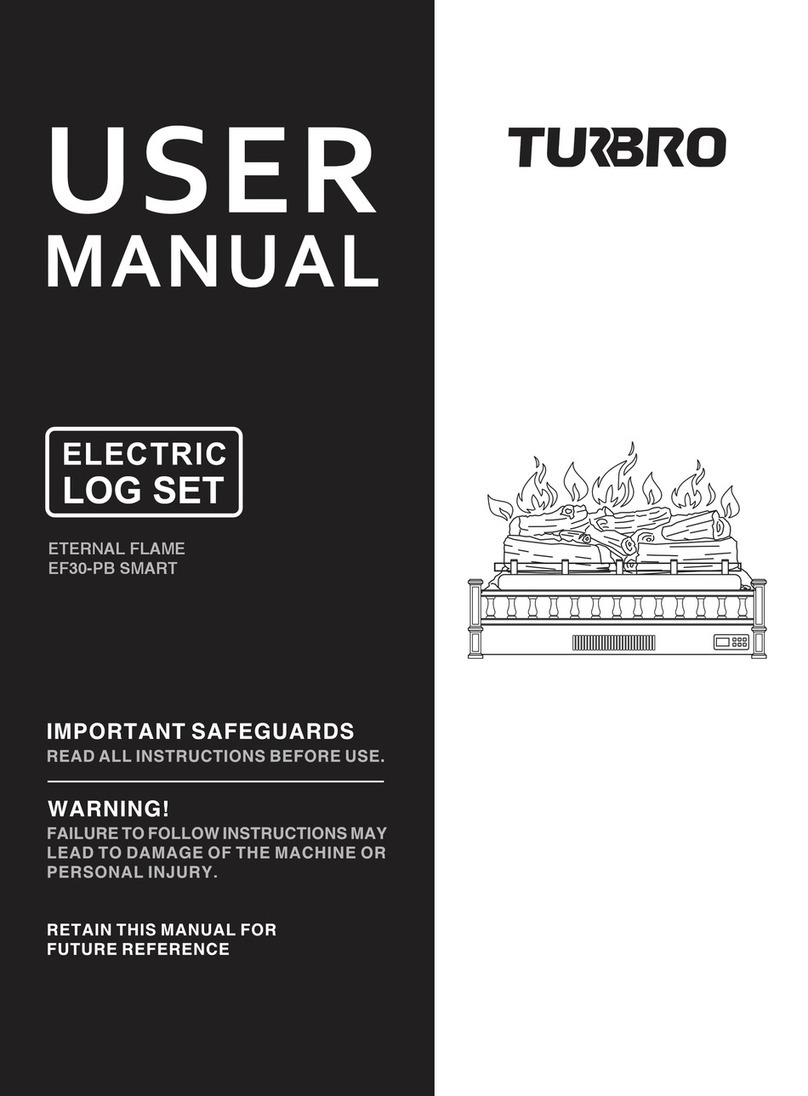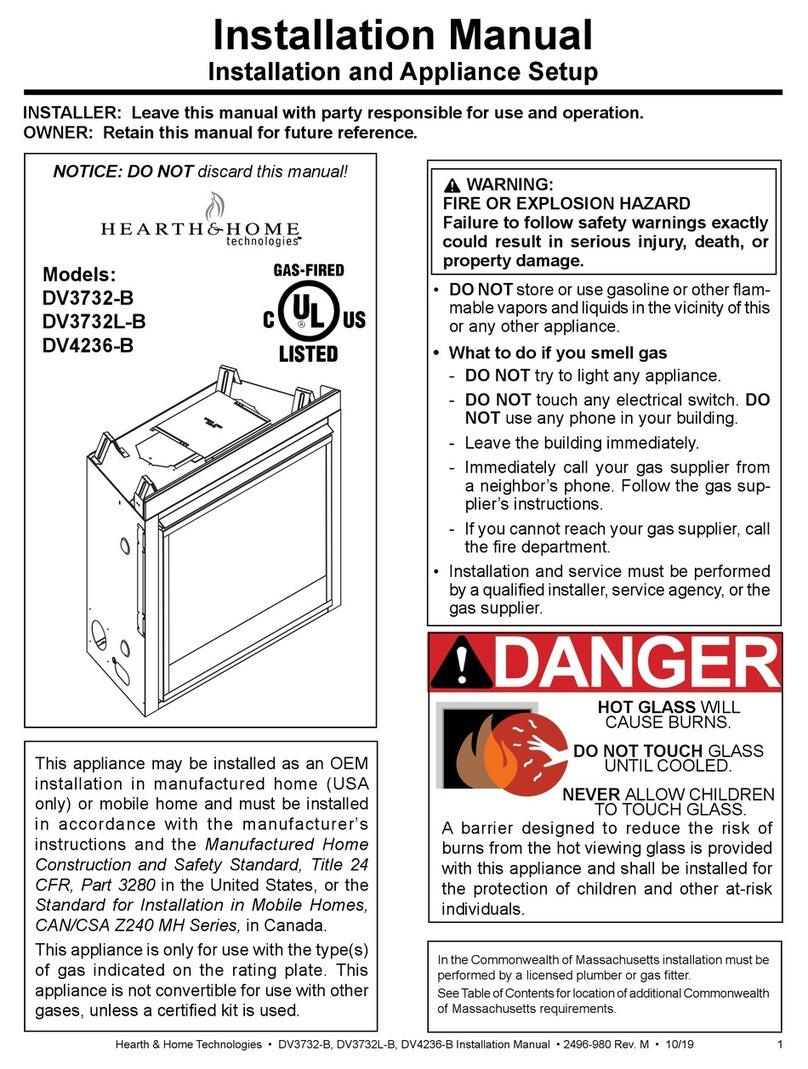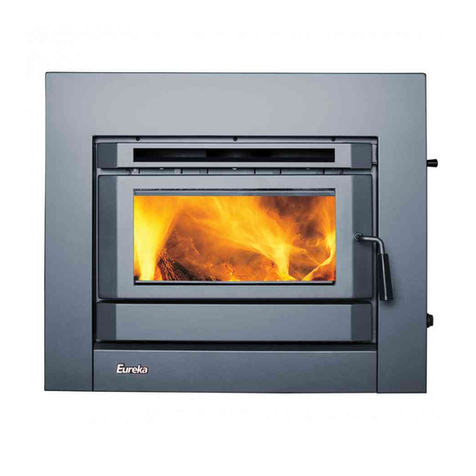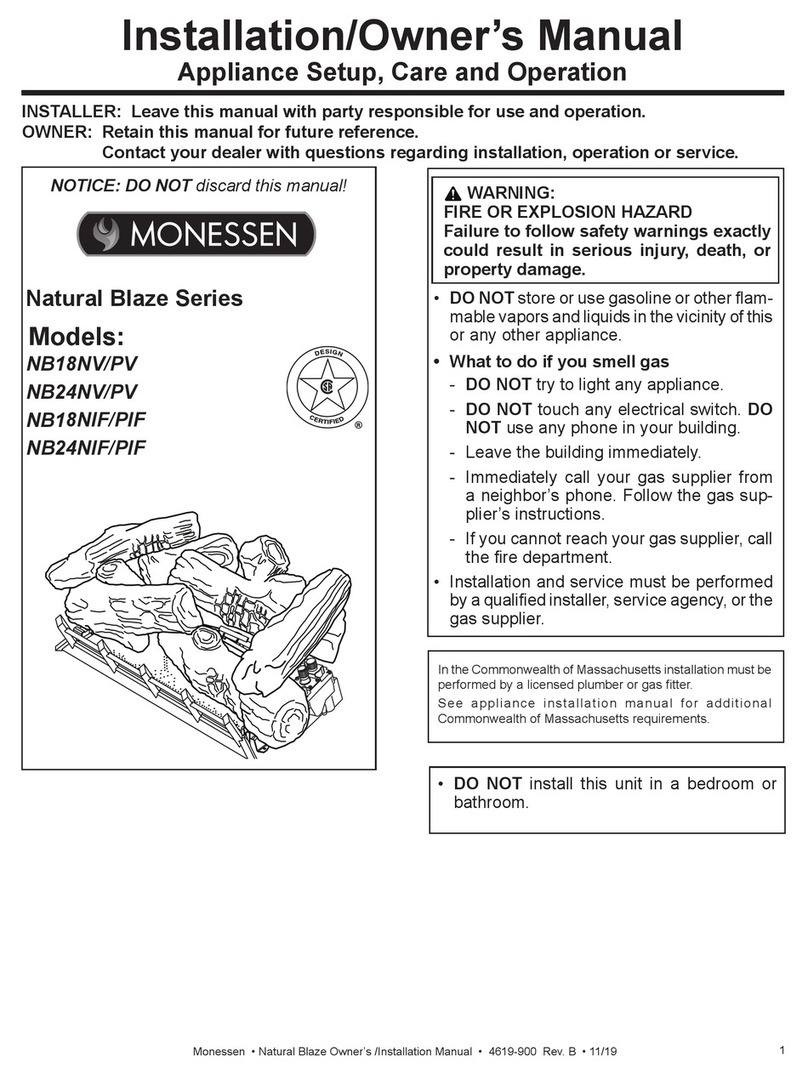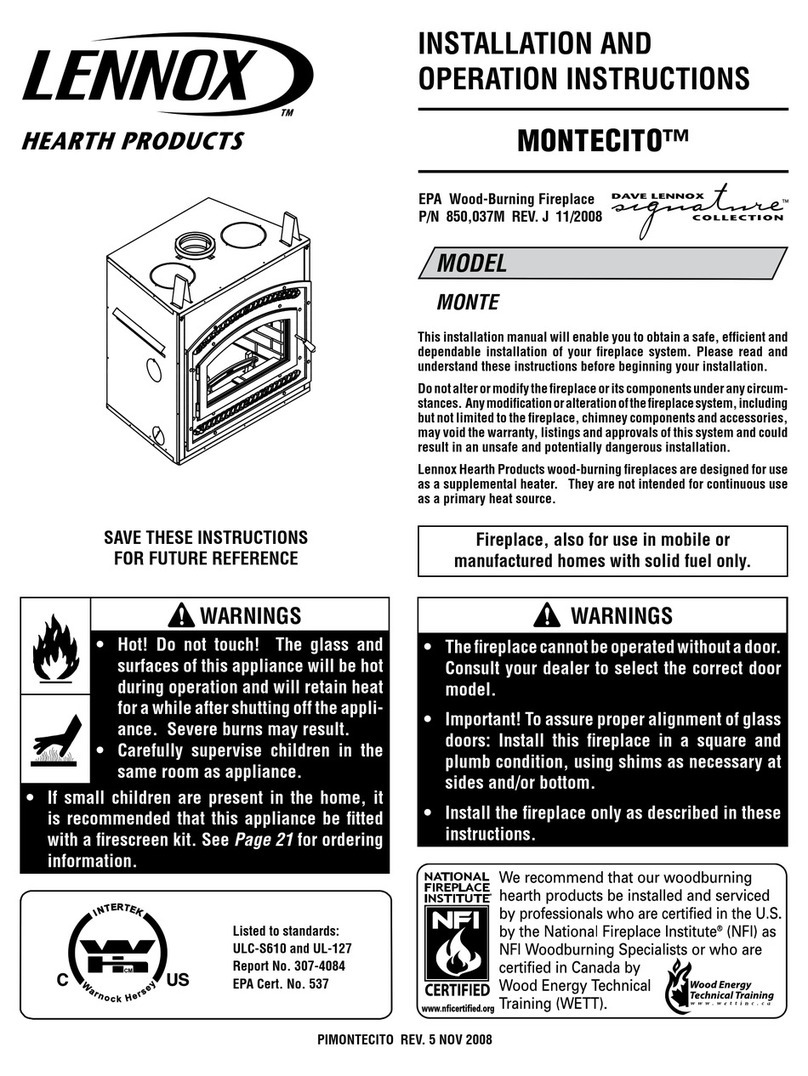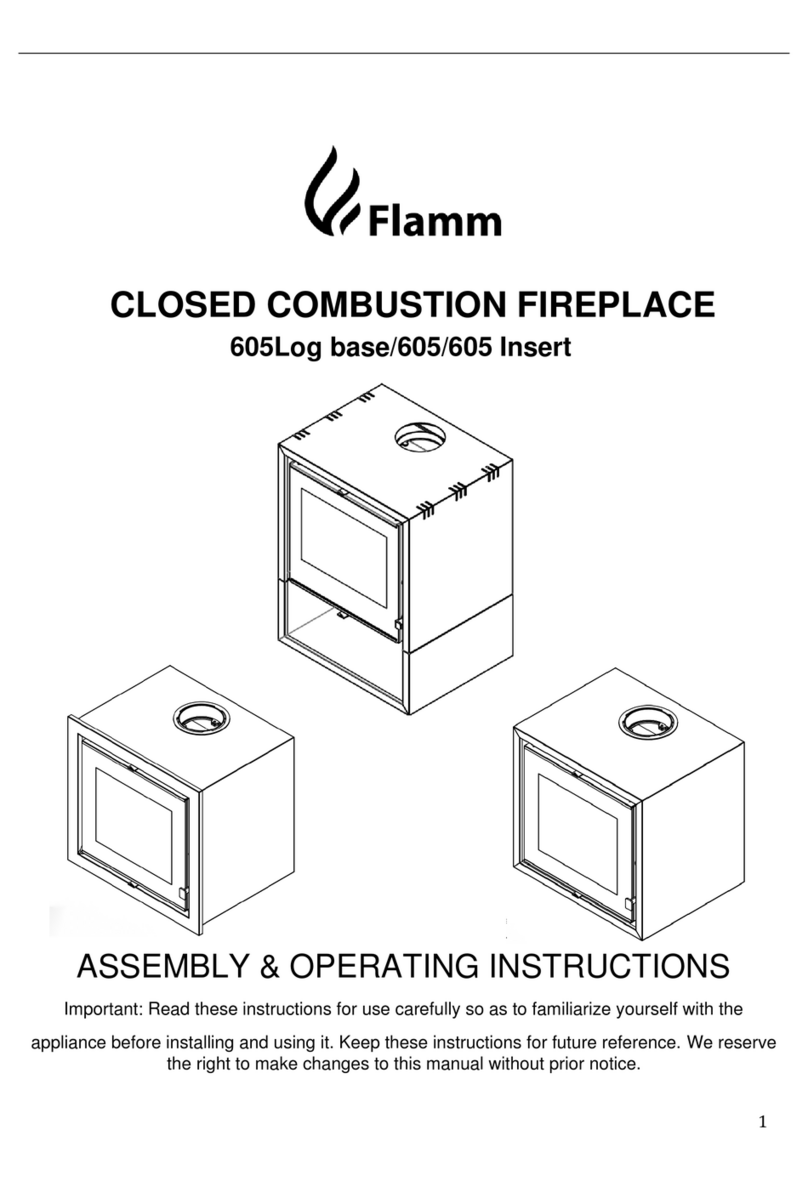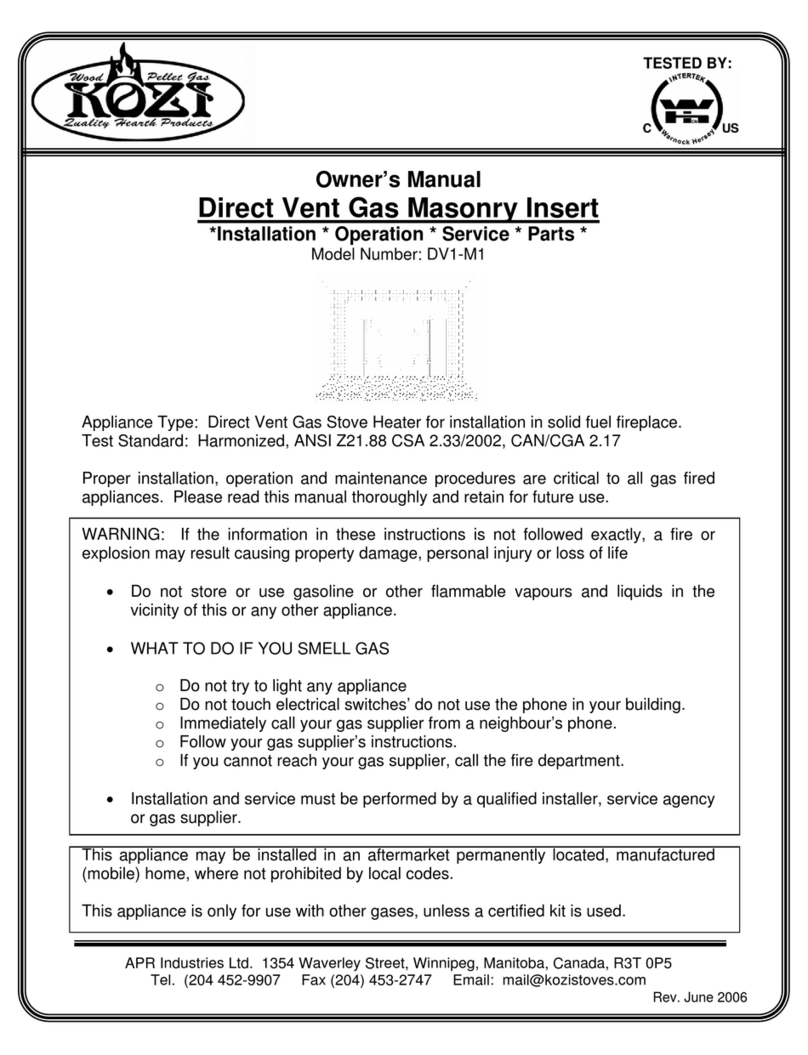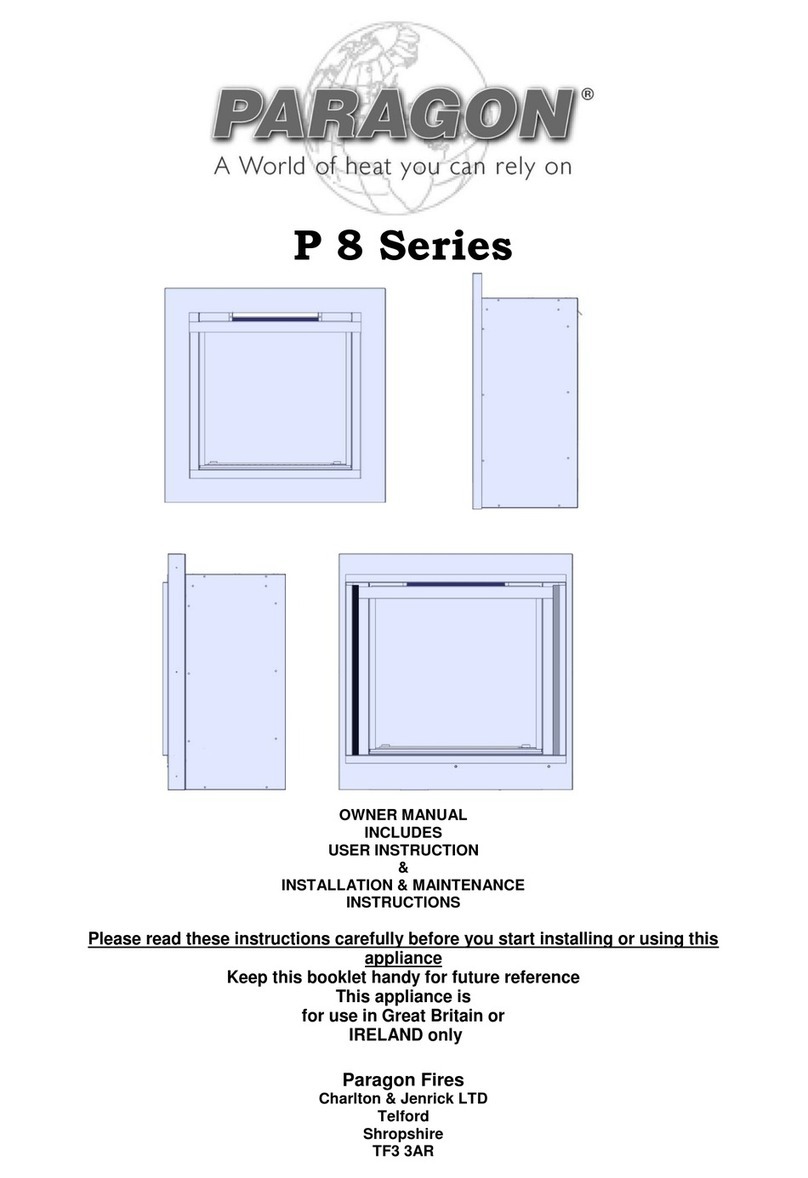19
9. To keep the outer body clean, simply dust over with a clean soft duster when cold. If there are
marks which cannot be removed with a duster, use a slightly moistened cloth very gently, but
only when the stove is cool and has not been in use. Then pat dry with absorbent paper towel.
Regularly vacuum soot and dust from around the inside of the door and around the glass and
rope seals.
10.If glass gets dirty on the inside from soot, clean with liquid ‘stove glass cleaner’ and a soft cloth
OR with an “Atmosfire Dry Wiper”, produced by Schott, (manufacturers of stove glass), and
available online. Do this as soon as possible once the soot appears, but only when the fire is
completely cool. Never use newspaper or soot or any other abrasive or cleaning method on the
glass.
11.FIREPLACE BODY:
a. The fireplace is finished with a heat-resistant paint, which can be cleaned with a soft
brush. Wait until the fireplace has cooled down before doing this. This finish can be
renovated with heat resistant fireplace paint, although the paint may not be an exact
match and it may be necessary to repaint the complete fireplace.
b. If the fireplace is purely ornamental, painting will provide a durable, attractive finish. If
the fireplace is used for heating, a high temperature heat resistant paint (available
from your hardware or paint dealer) must be used, in either aerosol or brush applied
form. Should rust become apparent, clean thoroughly with a wire brush and apply a
suitable anti-rust treatment.
c. During prolonged periods out of use, the air inlets should be left open and the door
left slightly ajar in order to circulate fresh air and discourage condensation from
forming which could encourage corrosion.
d. Surface rust may occur on the outside of the fireplace, coastal or humid regions can
cause this to happen faster than arid or dry regions. Proper cleaning and retreating
may need to be done seasonally.
e. Heavy rains and strong winds may cause rain water to enter via the flue pipe and
flood the internal cavity of the fireplace. Check the inside of fireplace for rainwater
after storms or heavy rains and clean where necessary to prevent rust. Consult your
local installer for examination of the flue pipe installation should the problem be
persistent after every rain.
12.CHIMNEYS AND FLUE-WAYS :
i. It is important that the chimney, flue-ways and any connecting flue pipe are swept
regularly. This means at least once a year for smokeless fuels and at least twice a
year for wood and other fuels. Only wire-centered sweep’s brushes fitted with a guide
wheel should be used. If it is not possible to sweep all parts of the chimney through
the fireplace, ensure there is adequate access to cleaning doors.
ii. After prolonged periods of not using the fire, the stove and flue system should be
checked for blockages prior to re-lighting.
We recommend regular servicing and safety checks are carried out by a qualified
engineer/competent person.
There must be no unauthorized modification of the appliance. Use only replacement parts
recommended by the manufacturer.





















